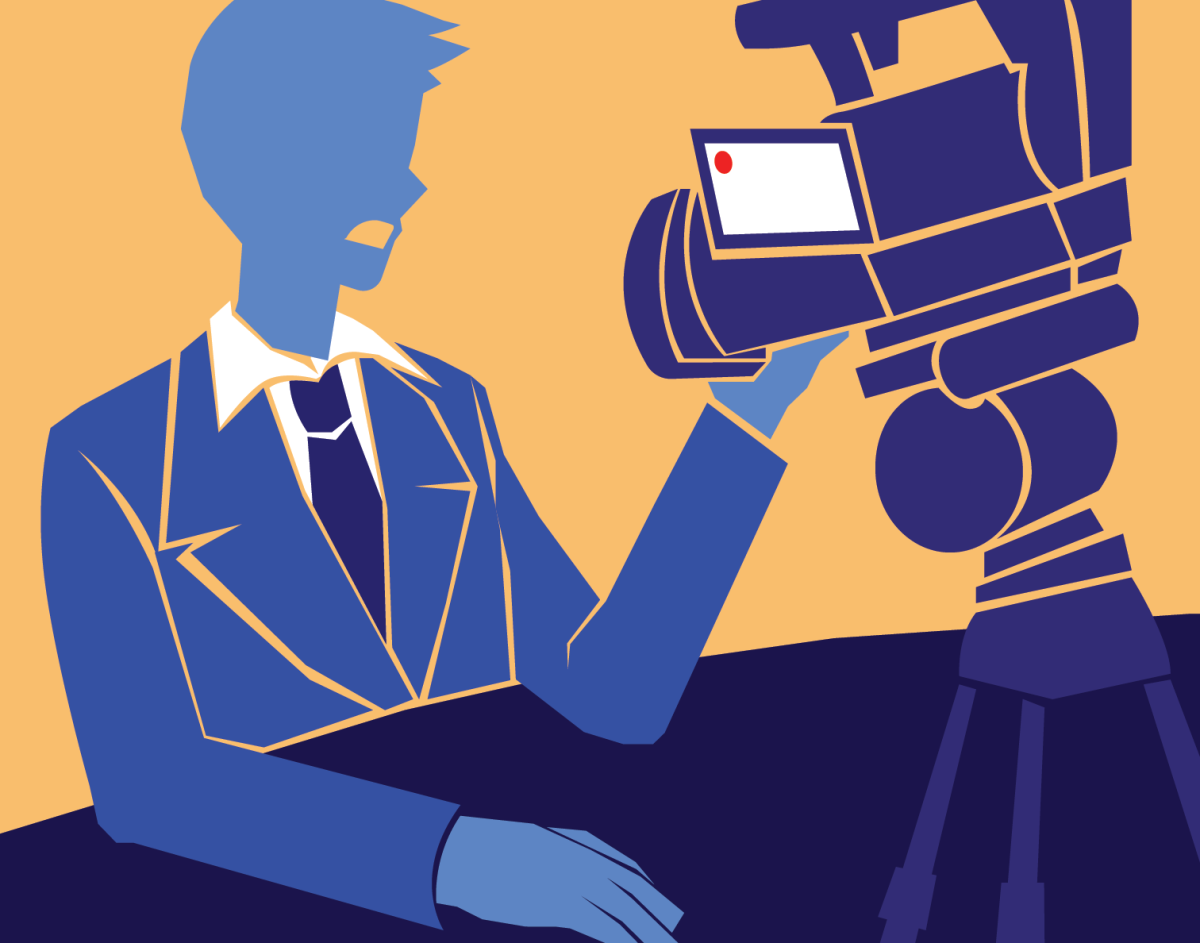Local and broadcast news have been the world’s most trusted forms of information for decades. However, due to the rise of streaming platforms and technological advances, traditional broadcasting may be falling out of favor. This has affected both aspiring journalists and reporters in the field.
Research has shown that traditional media has consistently been declining for a few decades, ever since the rise of the internet. Due to this rise, major news organizations, such as The Washington Post, NBC News, ABC News, NPR, Vice, Vox and BuzzFeed have been laying off journalists.
Local TV time slots and newspapers are not being consumed at the same rate that they used to be, as paper circulation is declining. Though bigger brands like The New York Times, The Wall Street Journal, The Washington Post, and other well-known publications have added digital subscriptions, overall digital traffic is minimal, and declinement rates are notable alongside local publications.
The rise of streaming platforms has also affected the field; increased competition, shifts to digital distribution and fragmented audiences are becoming characteristics of radio, cable and print media. Diana Sambotin, a production director at KXSU, wrote to The Spectator her thoughts on this shift.
“I’ve heard a lot that broadcasting, especially radio, is a dying field since more and more people have moved to streaming rather than listening to the radio. However, something that is special about radio (and even more so college radio) is that it’s a great place to discover new music and see what is up and coming in that sphere,” Sambotin wrote.
Sambotin continued about the anxieties she has about the future of radio broadcast.
“I’m worried that less and less people will be interested in tuning into radios and paying attention to what’s going on in the broadcasting world. Everything is so easily accessible on our phones that less and less people are probably watching the news anymore either.”
Though technology is changing the landscape of traditional forms of media, not everyone thinks this signals the end as an evolving landscape provides new opportunities. Communications Professor and KOMO News Anchor Tyrah Majors discussed how technology has affected broadcast journalism in her lifetime.
“A lot has changed in the short span of my broadcast career (5 years), including changes in digital, mobile storytelling, live streaming, and social media integration. The shift from linear television to digital broadcasting has been the most exciting for me,” Majors wrote to The Spectator. “The use of smartphones for reporting has become prevalent. Journalists can now report live from the field, edit footage, and broadcast directly from their mobile devices, which has made news coverage more immediate and available on popular apps like TikTok and Instagram.”
Echoing Majors’ remarks, Joe Barnes, an associate clinical professor of marketing who has worked extensively in broadcast journalism, having served as a vice president and news director at KOMO-TV Seattle and as an executive news producer at FOX-13 Seattle, touched on how smartphones have influenced news-gathering methods. The ability to record events gives anyone the ability to be what he calls a “citizen journalist.” Since many news organizations have had to cut staff, people capturing events live with their phones allows publications to gather what’s going on in the world quickly. However, he also pointed out that one-sided perspectives are a downfall as well as the spread of misinformation by AI.
The rise in AI content in mainstream media has impacted the broadcasting world. Organizations differ in the ethical use of tools; however, there has been a great increase in its use in media. Callie Solberg, a fourth-year communication and media major, talked about how the implementation of AI can pose potential risks.
“AI can be really beneficial, but at the same time, with all of the advancements [and] all of the benefits that come from streamlining and simplifying things with tech, there are an equal amount of risks that everyone is taking, especially with AI,” Solberg said. “I think that that has really challenged us to focus on human writing, human skill and reporting and communicating with other people.”
The decline of legacy media is a rising issue driven by technological advancements, the rise of AI, and changing consumer preferences. While these changes present opportunities for innovation in journalism, they also pose potentially significant challenges to maintaining the reliability, credibility and depth of news reporting. Overall though, Barnes believes that broadcast will continue to remain relevant for years to come in whatever form it may come in.
“I think it is a major force and [will] continue to be. When people see events, whether it’s a truck accident or a riot or horrible things happening in war zones, people are going to capture those events and share them. I think those do play an important part in overall journalism,” Barnes said.
As the media landscape evolves, journalism must adapt and find new ways to engage and inform the public, ensuring that the digital age’s core values of reporting—accuracy, balance, and integrity—are upheld.








